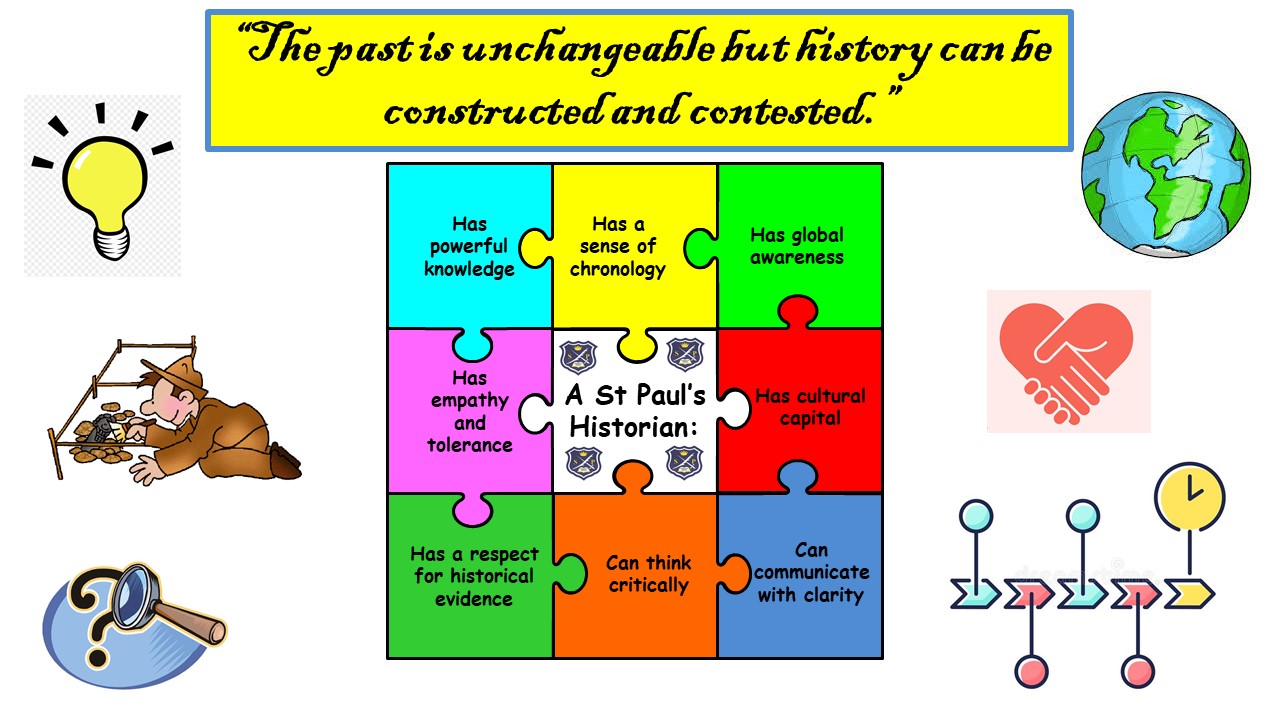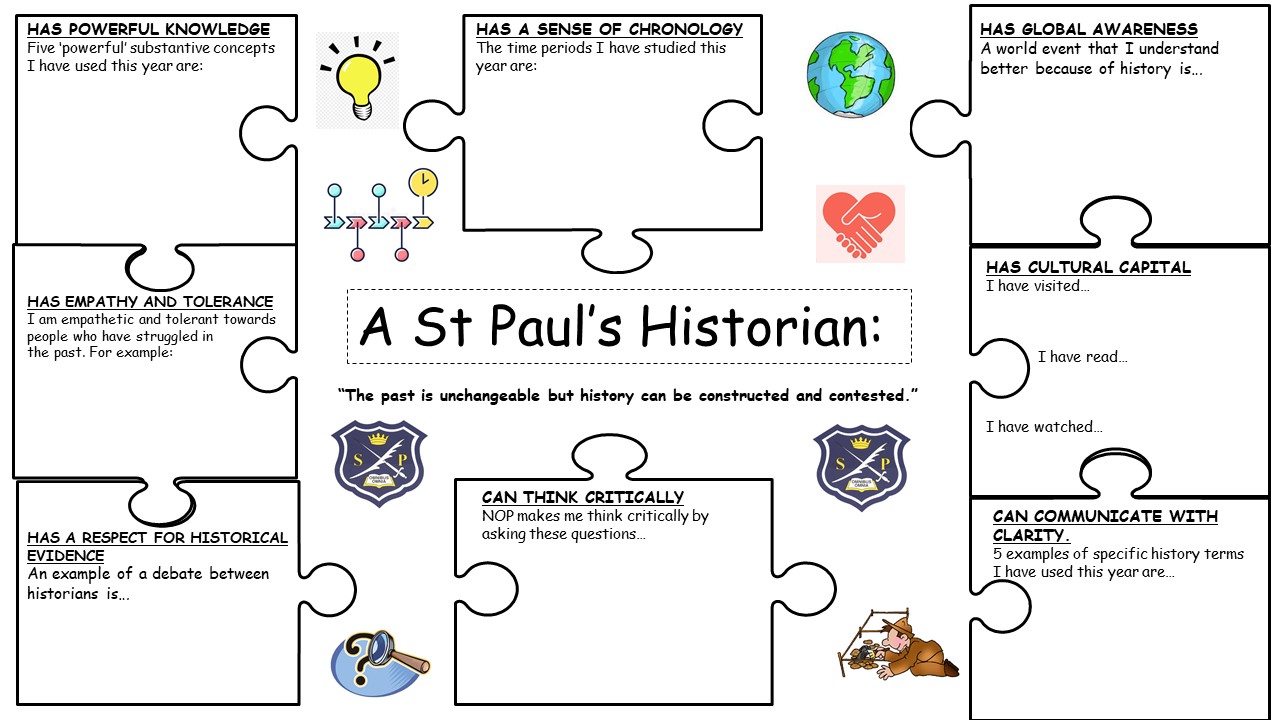History
St Paul’s School for Girls: Our vision for our History Curriculum.
The St. Paul’s School for Girls History Curriculum helps us to explain the world as it is by exploring the world as it was, in an intriguing and ambitious way. Understanding is developed around a spine of British History. Enquiries explore global, continental or local scales, emphasising the complexity of the past and the constructed, contested nature of history. To this end, pupils develop their disciplinary thinking, exploring the past from multiple perspectives and viewpoints. We strive to make our curriculum representative of the past’s inhabitants, aiming to understand a broad picture. These threads are combined and sequenced to craft a rich, broad and structured understanding of the past for our pupils.
Our curriculum aims to produce ‘citizen historians’ by helping change how our young people understand themselves, the world around them and their own place within it.
Undoubtedly, increasingly pupils’ historical knowledge, curiosity, critical thinking and communication skills are all key functions of our curriculum. Increased knowledge of the past helps to inform the identity of our young people; this curriculum will both give them confidence to build strong arguments of their own and flexibility to incorporate new perspectives into their thinking. The St. Paul’s School for Girls History Curriculum will help pupils question and influence the people and communities around them.
Our History Curriculum exists, within the wider St. Paul’s curriculum, to change each pupil and to give her new power. We want it to help all our students clamber in to the discourse and practices of educated people, so that they gain the powers of the powerful.
Each KS3 year group centres their learning upon an overarching question. All enquiries stem from this question in some way.
Year 7: How did monarchy and faith affect people in Britain, 750-1588?
Year 8: In what ways did war, empire and protest ignite change, 1649-1914?
Year 9: How have ideas and conflict shaped the modern world, 1914-1991?
The aims of the history curriculum at SPG.
- To be a ‘mirror and a window.’ What does this mean?
- To give you a sense of place in the world and in your community
- To make you curious, passionate and keen to deliver justice.
- To understand that history is messy, complicated and interconnected.
- To appreciate what historians do and why they have different opinions.
- To gain a broad chronological understanding.
- To acknowledge that history, both good and bad, shapes the society we live in today.



